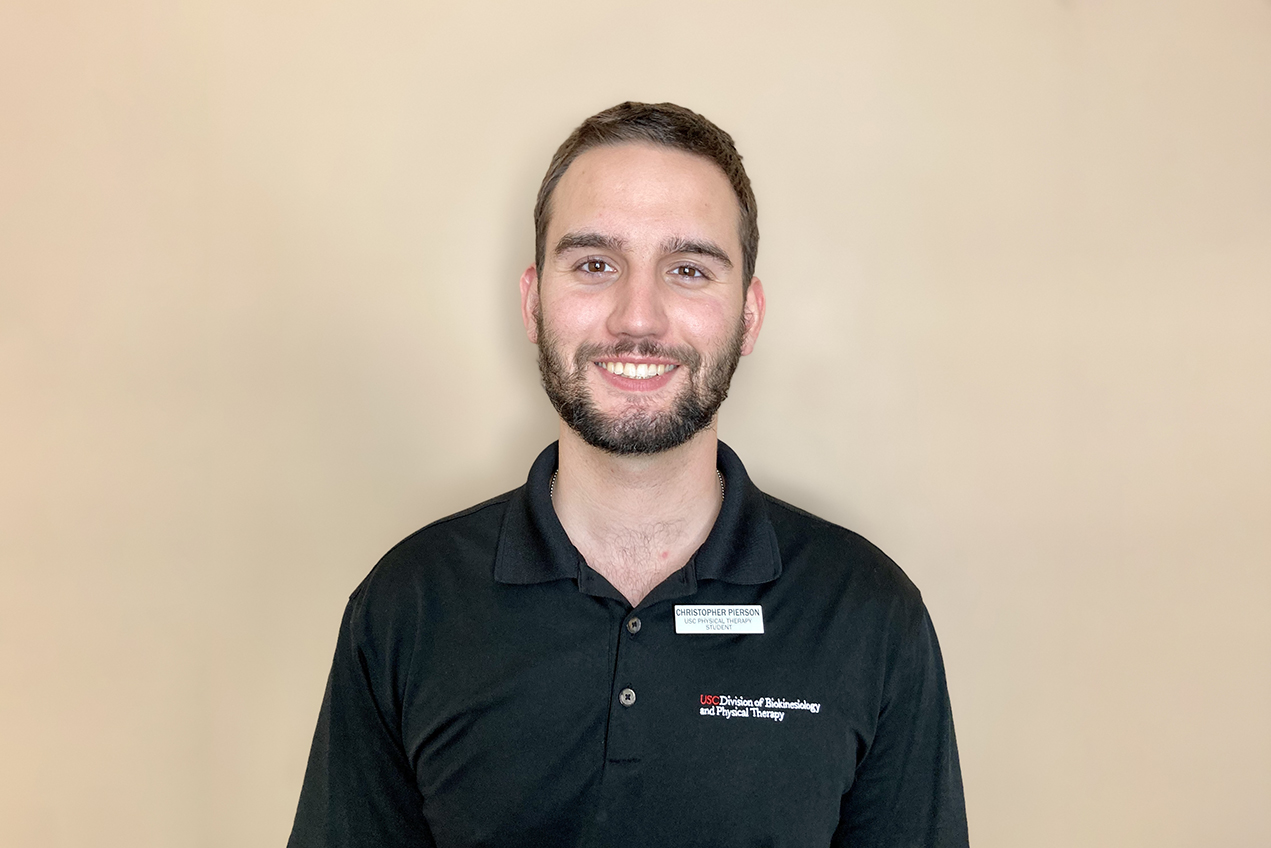Chris Pierson can’t pinpoint the exact moment he knew he was destined to become a physical therapist, but he knows roughly when he became interested.
At the age of 16, Pierson suffered a serious spinal cord injury while skiing. Finding himself suddenly paralyzed from the waist down, Pierson spent nearly two months in an inpatient rehabilitation hospital. At the time, all he wanted was to get out of bed and resume his life as a teenager, but first he had to relearn how to stand and walk.
Over the next six years, Pierson worked with seven physical therapists, both in the hospital and in outpatient settings in two different states. “Somewhere along the way, my physical therapist pointed out that I could do this as a career,” he said.
Getting back on his feet was a long process. First, the high school student began by standing within parallel bars with his therapists. Next, he began taking steps with a walker, then a cane and finally, at graduation, he was able to cross the stage on his own.
By then, he was hooked on the idea of physical therapy as a career. After graduation, he set out for The Ohio State University, where he majored in exercise science and minored in social psychology and personality — with the idea that it would improve his ability to connect with others.
Even though he was walking again, his body was still slowly recovering — and during his four undergraduate years, he continued with outpatient physical therapy. It was one of the hardest times of his life. “My first two years of undergrad were hard because I had extremely poor endurance,” Pierson said. “I was still dealing with the injury and also trying to fit in as a normal undergrad student in a new state.”
Giving back to the community
When he arrived at the USC Division of Biokinesiology and Physical Therapy to pursue his Doctor of Physical Therapy, Pierson dove into community service as well as his studies.
While riding BMX bikes at the skateparks in East Los Angeles, he met some friends who had no idea about physical therapy. He knew that the community needed help and access, so he co-founded the Student Run Clinic Wellness Center site, a pro bono clinic that offers free health care screenings and personalized advice to East L.A. residents.
As the Wellness Center site liaison, he was the one primarily responsible for organizing all of the student volunteers and licensed preceptors from multiple disciplines. Physical therapy had not previously been part of the organization, and Pierson wanted to show that DPT students could be just as involved at the organizational level as pharmacy or medical students. “I wanted to provide physical therapy to people who otherwise weren’t going to get it,” he said.
Finding his footing
These days, Pierson has only a few lingering issues as a result of his skiing injury. “I don’t have any issues practicing as a PT, but I still have a hard time walking long distances and there are certain areas of my body that are still very weak.”
Looking back, Pierson didn’t expect he would be at the level he is at today. He remembers clearly the months when it looked very unlikely that he would even be able to walk independently.
The experience has left him stronger in his resolve — and armed with tools to be the best physical therapist he can. “I have learned a lot about how to work with patients. I could see how my therapists did things and see what things they did I liked, and that has helped me a lot now in working with my own patients,” he said. “I learned a lot about different exercises and treatment programs from having to physically do it all myself.”
Healing others, healing himself
During his last acute care rotation at Keck Medicine of USC, Pierson was working with a patient who had been in the hospital for about a year after a major cardiac surgery. He and his instructor were the first ones to get her taking steps and standing up. “She was crying as she stood up. I would say that had the most impact. To do that I used all the things they emphasized — movement analysis and everything that goes into getting people to stand up. I still think about that moment nearly a year later.”
That moment brought back the flood of emotions from his own journey. “I remember being a patient standing up for the first time, and it kind of hit me when I got this patient standing up because it was the same thing I felt.”
After commencement, Pierson will be continuing his education, completing a residency in orthopaedics at the University of Texas Southwestern Medical Center in Dallas. He’s planning to volunteer at the local equivalent of the student-run clinic, where he’d like to again get physical therapy involved. After residency, he is considering plans to pursue a post-professional Ph.D. degree, eventually hoping to blend academia and clinical practice.
He’d like to focus on creating devices and braces that can help people with gait impairments, and also design exercise programs for people following neurological diagnoses and cancer rehabilitation. “I want to find all the ways I can to help people like me when I was injured,” he said.
— Katharine Gammon


